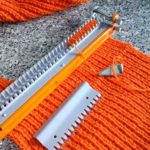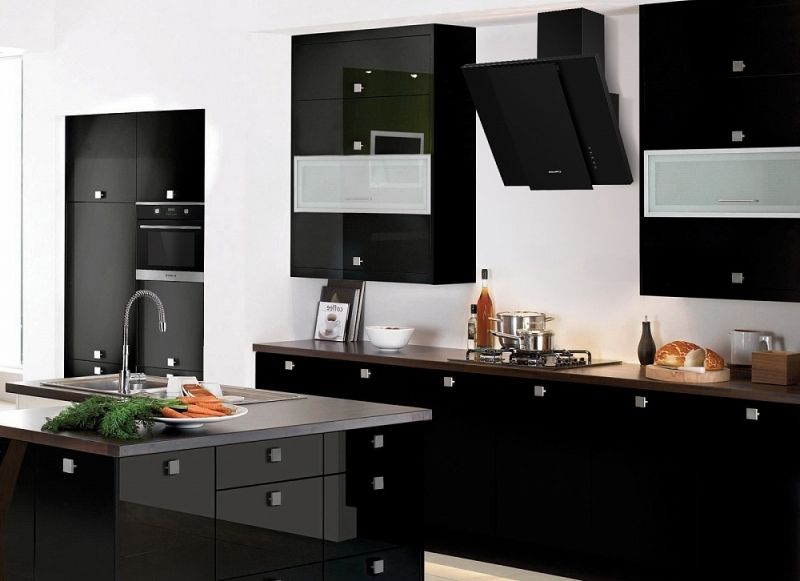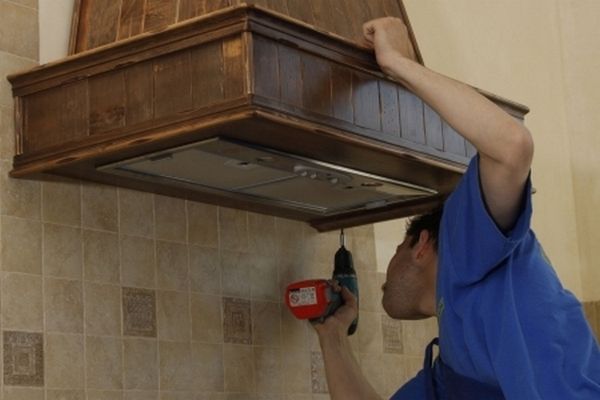Noise level standards for kitchen hoods
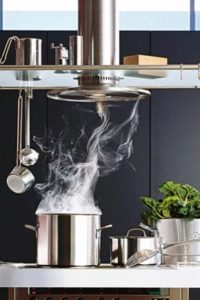 The hood has long become an indispensable kitchen attribute in every apartment. It copes well with the problem of air purification during cooking. But at the same time, it has an unpleasant property - during operation the device often makes serious noise. Why is this happening? Does this affect your health? How to reduce the operating volume?
The hood has long become an indispensable kitchen attribute in every apartment. It copes well with the problem of air purification during cooking. But at the same time, it has an unpleasant property - during operation the device often makes serious noise. Why is this happening? Does this affect your health? How to reduce the operating volume?
The content of the article
What should be the noise level of the hood?
On average, a working hood produces noise of about 60–65 dB. To make this value clearer, it can be compared with other possible volume levels:
- 20–40 dB – this norm is typical for a quiet conversation (minimum for whispering, maximum for a calm conversation at close range);
- 60 dB – background sound in a crowded supermarket;
- 80 dB – vacuum cleaner turned on;
- 110 dB – music at a disco or nightclub.
It turns out that the volume produced by a conventional kitchen hood does not exceed normal limits, but is quite noticeable to the hearing organs.
Considering that a person begins to feel pain at 120–140 dB, we can conclude that the noise impact of the device is relatively safe. In addition, it does not work all the time, but only during those periods of time when food is being prepared.
Why are hoods noisy?
To answer this question, you need to understand how the kitchen unit works and on what principle it works.
 At the moment, there are two indoor ventilation systems: flow and recirculation. The first ensures the absorption of polluted air for its further removal from the room. The second serves as a purifier thanks to built-in filters.
At the moment, there are two indoor ventilation systems: flow and recirculation. The first ensures the absorption of polluted air for its further removal from the room. The second serves as a purifier thanks to built-in filters.
The required internal components of the device are a fan that provides air intake and a motor that controls its operation. It is these elements that influence the noise produced.
IMPORTANT! When purchasing a hood, you need to inquire about its performance and power. These values are directly related not only to the efficiency of the device, but also to the volume level. The size of the kitchen is also taken into account.
Using a special formula, you can calculate a value that will allow you to avoid making mistakes when choosing a hood for a specific room:
ceiling height × room area ×12 = productivity.
The resulting value determines how much air the system can process in 1 hour. And if you multiply it by a factor of 1.3, you will also be able to take into account the standard length of the air duct, the number of floors of the building, the general pollution of the environment, etc.
At the same time, it is worth purchasing a device whose performance is slightly higher than calculated. Thus, it will not have to be turned on at high speeds, which will just save you from unnecessary noise. But do not forget that the more powerful the hood, the louder it works. The same applies to the cross-sectional area of the pipe: the smaller it is, the more noise.
How to reduce hood noise
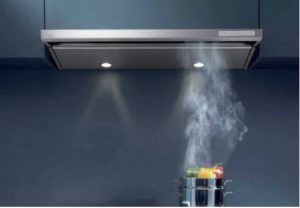 First of all, when installing the device, the owner must take care of the reliability of its fastening, the strength of the structure, its integrity and tight fit to the wall. If there are gaps in the system or the air duct is not installed securely, then the operating noise will increase, to which unquenchable vibration will be added. Backlash can be eliminated using foam rubber or polyurethane.
First of all, when installing the device, the owner must take care of the reliability of its fastening, the strength of the structure, its integrity and tight fit to the wall. If there are gaps in the system or the air duct is not installed securely, then the operating noise will increase, to which unquenchable vibration will be added. Backlash can be eliminated using foam rubber or polyurethane.
It is also worth considering the material from which the air outlet pipe is made. The so-called corrugation, due to its ribbed metal surface, increases noise, while ordinary smooth plastic does not produce it. To reduce the volume, you can attach sound-absorbing material (for example, isolon) to the air duct.
ATTENTION! The sound becomes louder if the device is not cleaned regularly. Dirty filters and pipes form obstructions in the path of air movement, thereby causing greater noise.
Are there silent hoods?
It’s worth immediately debunking the myth - completely silent hoods do not exist at the moment, although developers have already achieved enormous success in noise reduction.
The most advanced option is now considered to be the NRS system, developed by Italian designers. It has serious advantages compared to analogues:
- all possible details that can serve as a barrier to air movement are taken into account so that unnecessary resistance does not arise;
- the housing itself is made of sound-absorbing materials and has fairly thick walls;
- inside the air duct there are special V-shaped traps made of anti-acoustic material, which, according to the developers, allows the system to literally dampen sounds;
- the fan is located at the maximum distance from the air intake.
All this ensures a noise reduction of almost 85% and makes the operation of the hood noticeable only in the penultimate operating mode.
So, now you know almost everything about the noise of exhaust devices, how to suppress it, and you can easily choose a device that meets the requirements of your kitchen.

